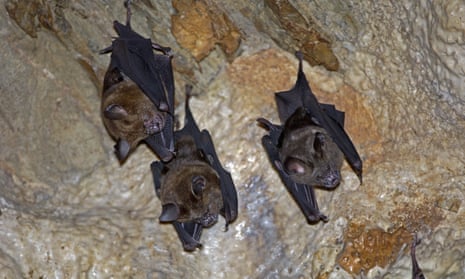Scientists have pinpointed a population of virus-infected bats, which they have linked to the mysterious outbreak of Sars disease 15 years ago. Hundreds died as the virus spread around the globe but its source was never traced.
Now, after years of searching across China, where the disease first emerged, researchers reported a few days ago that they had found a remote cave in Yunnan province, which is home to horseshoe bats that carry a strain of a particular virus known as a coronavirus. This strain has all the genetic building blocks of the type that triggered the global outbreak of Sars in 2002.
“This will certainly not be the only cave that contains bats infected with these strains of virus, but it is really important that we have found the first one,” said Sars expert Jeremy Farrar, director of the Wellcome Trust. “Samples from these bats will make it much easier to develop a vaccine for the disease and help us be prepared for another outbreak.”
Severe acute respiratory syndrome (Sars) first appeared in November 2002 in southern China and spread around the world – often carried by airline travellers – and eventually killed more than 750 people in 37 countries. It was contained by placing patients in quarantine. The outbreak ended in 2004 and the disease has never resurfaced.
But scientists have always feared that Sars could reappear. Hence the efforts of Chinese scientists – led by Shi Zheng-Li and Cui Jie of the Wuhan Institute of Virology, China – to trace the source of the outbreak. Scientists initially suspected that civet cats, sold in markets in China, were the source of the virus but later turned their attention to bats, which they realised were the prime source of the virus. Civets were merely an intermediary.
In their study – published in the journal Public Library of Science Pathogens – the Wuhan team reveals that by sequencing the genomes of the different strains of the virus found in horseshoe bats in the cave they found these contained all the genetic pieces that make up the version of Sars virus that caused the 2002 outbreak.
These strains often mix and could have produced a strain that caused the Sars outbreak. “This was a really heroic effort by the team of scientists involved,” said Farrar.
“Finding these caves and getting sample from bats inside them would have been very hard and dangerous work. However it was definitely worth it. Sars is a horrible disease and extremely dangerous.
“There is no effective treatment and no vaccine. It was only contained the last time because it was possible to quarantine people while they were still infectious. Now we have a chance to create vaccines and treatments.”
In their paper, the Chinese team warn that another deadly outbreak of Sars could emerge at any time. As they point out, the cave where they discovered their strain is only a kilometre from the nearest village. The risk of people becoming infected is a definite possibility, they stress.
“However, this is good news overall,” saidd Farrar. “We now have something concrete to work on, and I applaud the openness of these Chinese scientists in sharing their work and – I hope – these virus strains.”

Comments (…)
Sign in or create your Guardian account to join the discussion